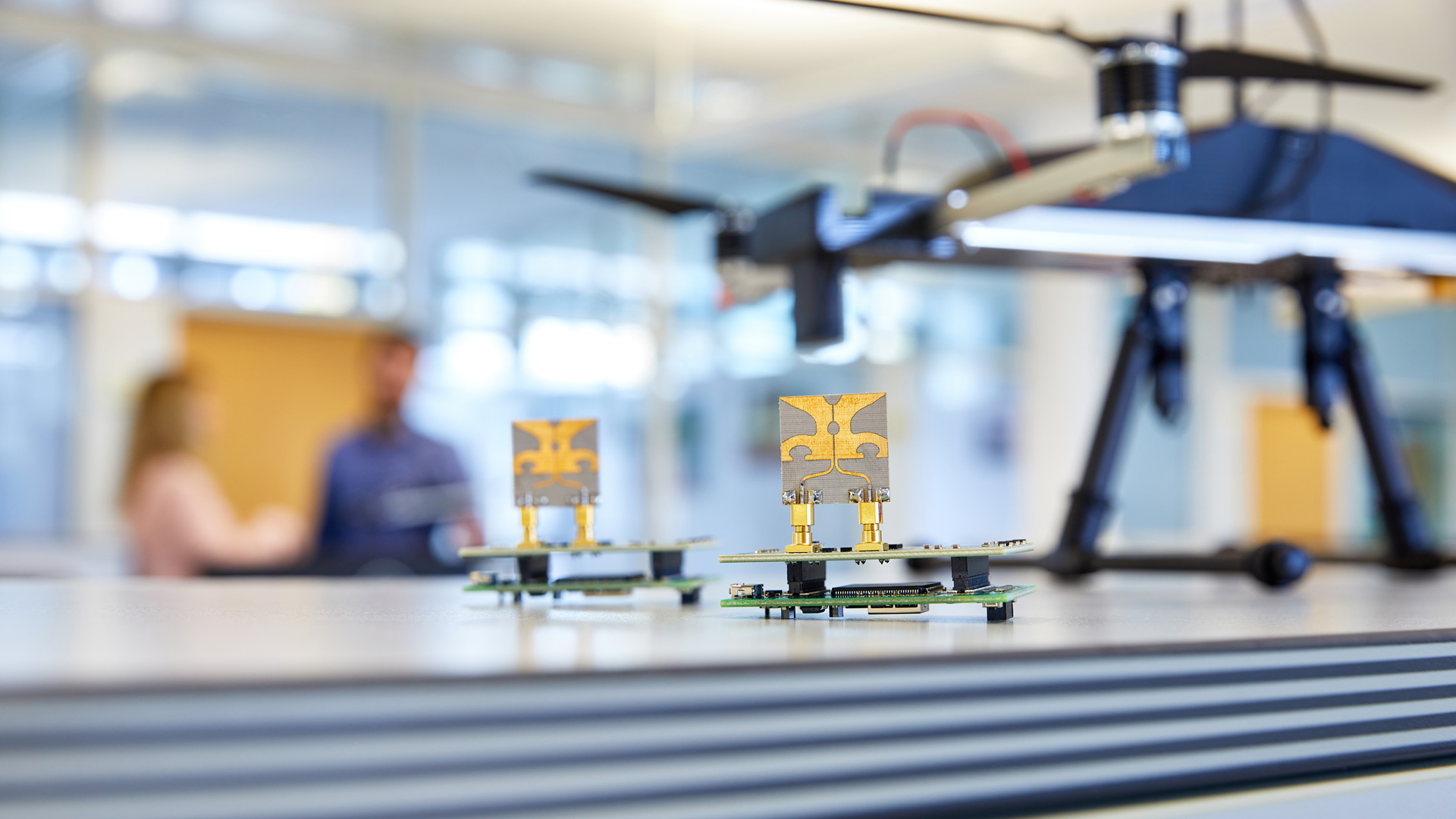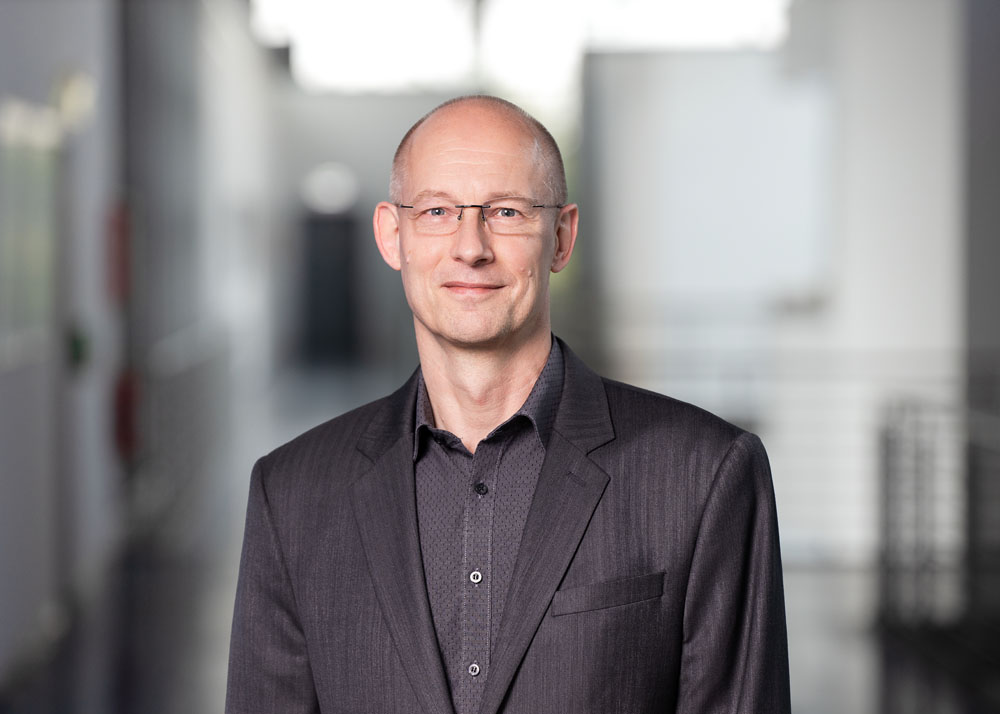The research group is mainly dedicated to the design of energy-efficient high-frequency circuits, which are particularly important in battery-operated sensor networks and in wireless communication. In order to be able to implement power-saving overall systems, the transmission and reception circuits are also supplemented by power management solutions and analog sensor readout circuits.
Main targets
The group focuses its research activities on minimizing the power consumption of fully integrated transmit and receive circuits while ensuring the necessary RF properties. In many nodes of wireless sensor networks, the power consumption of the transmitting and receiving modules is the dominant factor. Therefore, the design of energy-efficient wireless communication systems first focuses on the precise design of the high-frequency circuits in order to minimize signal losses and noise contributions and to achieve the highest possible signal amplification with minimal power consumption. In addition, intelligent co-design with the baseband processor and the implementation of suitable communication protocols are required to extend battery life in such wireless sensor nodes.
In addition, the research group is also concerned with the design of radiation-resistant high-frequency circuits for space travel. In addition to the power consumption, the challenges here also lie in ensuring reliable operation under sometimes harsh environmental conditions, such as the temperature range, exposure to cosmic radiation and difficult radio propagation conditions (in satellites). Specific circuit solutions are developed for this. To support this, simulation methods and design strategies are further developed in order to better model radiation effects on high-frequency circuits and to minimize their effects on the performance of the ICs.
Research topics
- wake-up receiver
- transmit and receive circuits for wireless sensor networks
- Impulse-Radio Ultra-Wide Band (UWB) transmitting and receiving circuits for use in wireless communication, localization in buildings and radar
- analog readout circuits for sensors
- integrated power management
- radiation-proof high-frequency circuits for space applications
- radhard design of RF circuits
Research results
Two different Impulse Radio-UWB transmitting and receiving circuits were developed, which are used on the one hand for wireless communication over short distances in difficult environmental conditions and on the other hand for high-precision localization applications in buildings. They meet the UWB regulatory requirements in Europe and the USA. They are equipped with internally controllable sleep modes in order to reduce the average power consumption without restricting functionality. One of the two solutions is compatible with the IEEE 802.15.4a standard, allows communication in 4 RF channels between 6.0 and 8.5 GHz and enables the use of different data rates from 0.85 Mbit/s to 27.24 Mbit/s. The second solution uses a proprietary communication scheme and is specially optimized for highly accurate distance determination (better than 1 cm) with a high update rate. This solution enables the highly precise localization and navigation of autonomously driving and flying vehicles, for example in buildings where GPS is neither available nor accurate enough.
Transimpedance amplifiers (TIA) and VCSEL drivers, which are required at the interface between the optical fiber and the electronic world, have been developed for the use of fiber optic communication in satellites (e.g. communication satellites with very high data throughput). In addition, the group can draw on many years of experience in the design of frequency synthesizers with the highest performance for space applications. The circuit designs are supported by theoretical research contributions on the modeling of phase noise effects and circuit approaches to minimize them.




